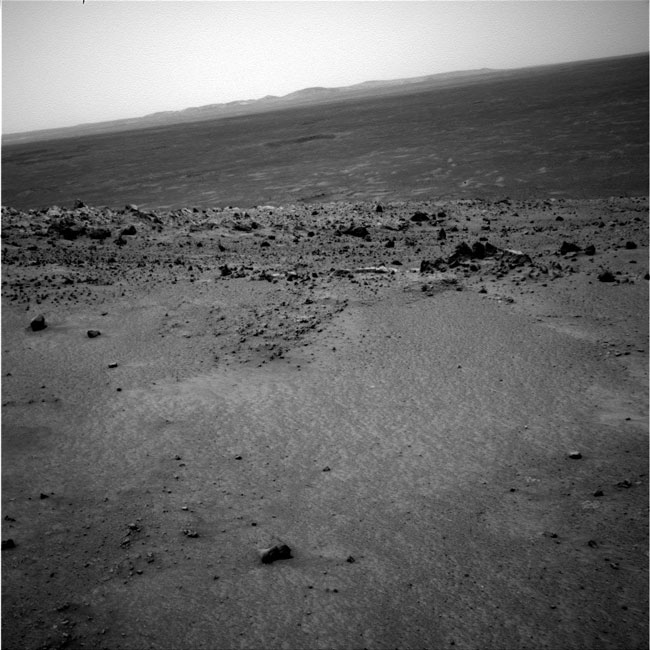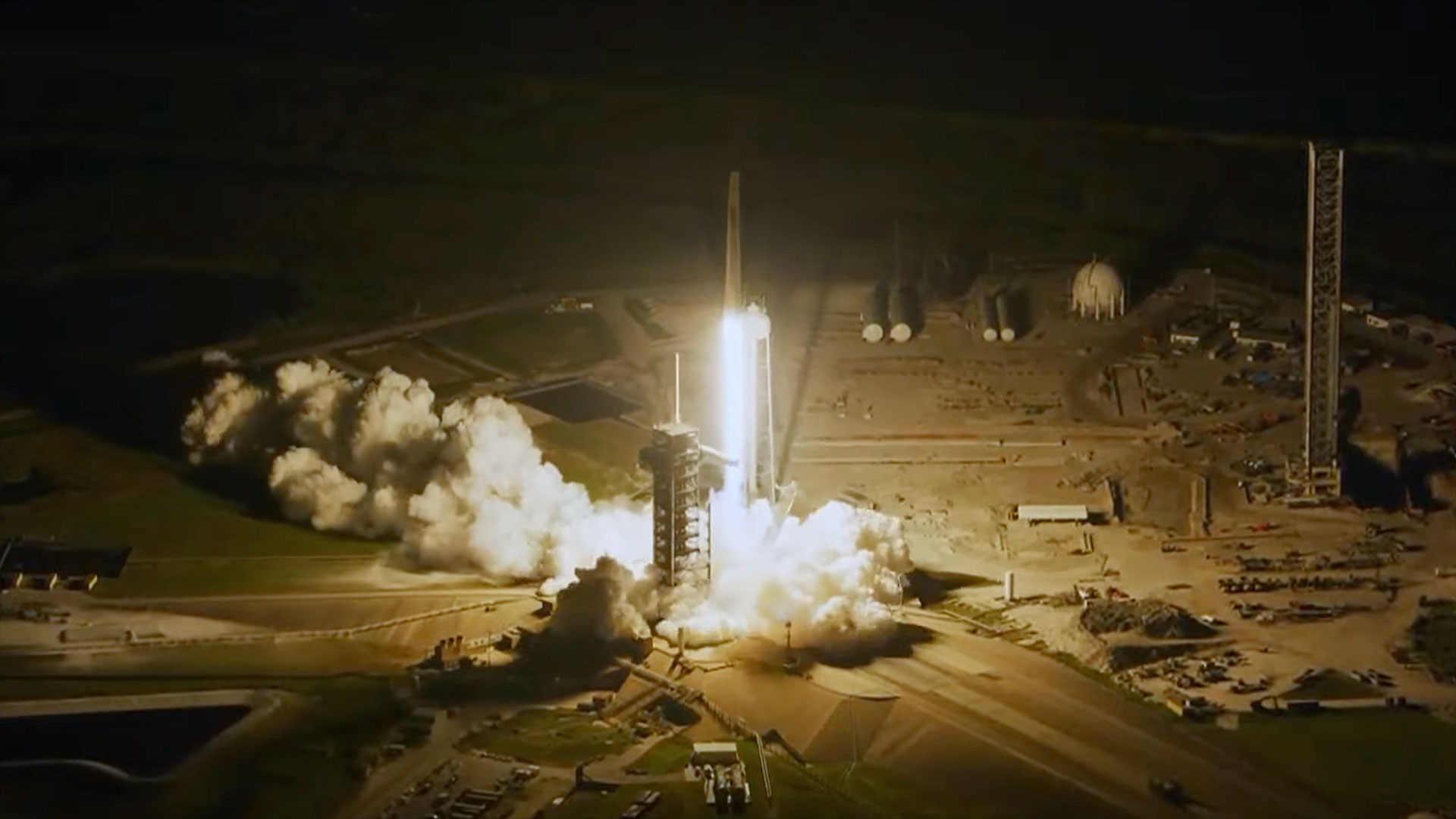Summit in Sight for Mars Rover Spirit

At its Gusev crater exploration site, the Spirit Mars rover is wheeling to the summit of Husband Hill and likely to complete its climb this week.
"I think we're going to make it," said the Mars Exploration Rover program's lead scientist, Steve Squyres of Cornell University. New imagery from the robot shows a feature that is either the summit or something very close to it, he noted in a newly issued rover update on a Cornell University-based website.
Spirit has wrapped up work in what's called the Voltaire region, including a thorough sweep of a rock called "Assemblee" using science gear attached to the rover's robotic arm.
Assemblee has turned out to have "a crazy composition," Squyres noted. The rock has the highest levels of chromium that the Mars rover team has ever seen on Mars. "A weird one," he added.
Big event
Spirit's drive to the summit within the Columbia Hills is eagerly awaited by Mars rover scientists.
Not only should observations from the vantagepoint be impressive, rover team members hope to inspect a basin to the south and possibly layered terrain on the basin's eastside.
Breaking space news, the latest updates on rocket launches, skywatching events and more!
Reaching the summit is a big event for Spirit, said Larry Crumpler, a member of the Mars rover science team. He is also research curator in volcanology and space sciences at the New Mexico Museum of Natural History and Science in Albuquerque.
Crumpler told SPACE.com that unless the next drives of Spirit have troubles with terrain or the like, there is a "good probability" of being at or very close to the summit by the end of this week.
Spirit touched down on Mars at Gusev crater in early January 2004.
Opportunity: puzzling features
Spirit's robot companion--the Opportunity rover--touched down a few weeks after Spirit and is scouting out Meridiani Planum on the other side of Mars.
In his Cornell rover update, Squyres also spotlighted new findings by the Opportunity Mars rover.
A puzzler is further investigation of "blueberries", the tiny gray spheres of hematite that provide evidence that water once infused the Meridiani Planum area.
"One of the things we've been wondering about for awhile was whether the blueberries are the same everywhere, or whether they change from place to place if you travel far enough."
The answer: the blueberries at Opportunity's current locale are indeed different compared to those found earlier and several miles away.
"The berries are more numerous here, and some seem to be smaller than any we've ever seen. And interestingly, some don't appear to be round. We're still debating what this means, but clearly the hematite is distributed a bit differently here than it has been in any other rocks we've seen at Meridiani," Squyres reported.
Cobbles and rinds
And there are a couple of other mysteries that Opportunity has encountered.
"One mystery we've been dealing with for a long time is the origin of the little dark 'cobbles' that we occasionally see out on the plains," Squyres said.
There are two theories for these features: One is that they are pieces of ejecta - stuff that has been tossed out of nearby craters by impacts. The other theory is that they are meteorites.
"That'd be interesting too, though [it would] tell us less about Mars than if they're martian rocks," Squyres said.
Yet another puzzle: mysterious "rinds" that are sometimes spotted on rocks at Meridiani, Squyres said.
"These look like hard outer shells on some parts of some outcrops, and they're darker and a little redder than the rock that they encrust," Squyres said.
Opportunity has wheeled up to such an outcrop that has some rinds on it, "among the best we've ever seen," Squyres added. "So once we nail the cobble problem, we may go after the rinds next."
- A Mars Rover's Great Escape
- Mars Rover Special Report
Join our Space Forums to keep talking space on the latest missions, night sky and more! And if you have a news tip, correction or comment, let us know at: community@space.com.

Leonard David is an award-winning space journalist who has been reporting on space activities for more than 50 years. Currently writing as Space.com's Space Insider Columnist among his other projects, Leonard has authored numerous books on space exploration, Mars missions and more, with his latest being "Moon Rush: The New Space Race" published in 2019 by National Geographic. He also wrote "Mars: Our Future on the Red Planet" released in 2016 by National Geographic. Leonard has served as a correspondent for SpaceNews, Scientific American and Aerospace America for the AIAA. He has received many awards, including the first Ordway Award for Sustained Excellence in Spaceflight History in 2015 at the AAS Wernher von Braun Memorial Symposium. You can find out Leonard's latest project at his website and on Twitter.
